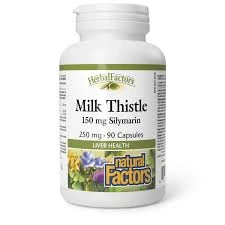
Dec . 18, 2024 23:54 Back to list
Suppliers of Neomycin and Geneticin for Research and Laboratory Use
Neomycin and Geneticin Suppliers and Their Importance in Research
Neomycin and Geneticin are important aminoglycoside antibiotics widely used in microbiology and molecular biology research. These compounds are vital tools for scientists studying gene expression, protein synthesis, and antibiotic resistance. In this article, we will explore the significance of neomycin and Geneticin, highlight their applications, and discuss the considerations when sourcing these important reagents from suppliers.
Understanding Neomycin and Geneticin
Neomycin is a complex of antibiotics derived from the bacterium *Streptomyces fradiae*. It is primarily used for its antibacterial properties, particularly against gram-negative bacteria. Geneticin, or G418, is a more potent derivative of neomycin that is often employed in cell culture for selecting genetically modified cells. It is particularly effective for the selection of cells that carry a neomycin resistance gene, such as the *neo* gene derived from the Tn5 transposon.
Both compounds are essential in the development of stable cell lines and in the transfection process, where DNA is introduced into cells. The ability to select for only those cells that successfully take up and express a desired gene is critical in various applications, including gene therapy, vaccine development, and cancer research.
Applications in Research
1. Selection of Transgenic Cells
One of the most common applications of Geneticin is in the selection of stable transgenic cells. When a foreign DNA construct containing the neomycin resistance gene is introduced into a host cell, only those cells that successfully integrate the DNA will survive in the presence of Geneticin. This selective pressure allows researchers to isolate and expand populations of cells that carry the desired genetic modifications.
2. Studies on Antibiotic Resistance
Neomycin and Geneticin are also used to study mechanisms of antibiotic resistance. By analyzing how certain strains of bacteria or mammalian cells respond to these antibiotics, researchers can gain insights into the evolution of resistance genes and the impact of antibiotic use on microbial communities.
3. Functional Genomics
In functional genomics, Neomycin and Geneticin play a role in assays that aim to understand gene function and interaction. Researchers can knock down or overexpress specific genes and then use these antibiotics to select for successfully modified cells, facilitating the study of gene functions and pathways.
neomycin geneticin supplier

Sourcing Neomycin and Geneticin
When it comes to sourcing neomycin and Geneticin, researchers have several reputable suppliers at their disposal. It is crucial to select suppliers that offer high-quality products, as the efficacy of these antibiotics can significantly influence experimental outcomes. Some well-known suppliers include
- Thermo Fisher Scientific A leading supplier of laboratory reagents, Thermo Fisher provides Geneticin and neomycin of varying purities and concentrations, suitable for diverse applications in research.
- Sigma-Aldrich Known for their robust catalog of biochemicals, Sigma-Aldrich offers both Neomycin and Geneticin along with detailed information regarding concentration, purity, and storage conditions.
- Santa Cruz Biotechnology This supplier specializes in research antibodies but also supplies Geneticin and other vital reagents for cell biology research, often targeted at academic laboratories.
Considerations When Purchasing
When sourcing neomycin and Geneticin, researchers should consider several factors
1. Purity and Form Different applications may require varying levels of purity. It's essential to choose a reagent aligned with the specific needs of an experiment.
2. Storage and Handling These antibiotics typically require specific storage conditions to maintain their efficacy. Be sure to follow the manufacturer's storage guidelines.
3. Cost and Availability Pricing can vary significantly between suppliers. Researchers should take this into account and consider bulk purchasing options if they anticipate needing large quantities.
Conclusion
Neomycin and Geneticin are indispensable tools in modern biological research, allowing for the selection and study of genetically modified cells and the exploration of antibiotic resistance mechanisms. By leveraging reliable suppliers and paying careful attention to the details of sourcing, researchers can optimize their use of these essential reagents, ultimately advancing our understanding of genetics, microbiology, and molecular biology. Through meticulous planning and execution, the research community can continue to push the boundaries of scientific knowledge.
-
Quality Bacillus Coagulans BC30 Factory - Expert Production
NewsAug.02,2025
-
China Salivation AI with GPT-4 Turbo Features
NewsAug.01,2025
-
Epic Sepsis Factories: AI-Driven Detection with GPT-4 Turbo
NewsJul.31,2025
-
Acute Salpingitis and Oophoritis AI Factory
NewsJul.31,2025
-
Premium China Bacillus Subtilis Supplier & Factory Solutions
NewsJul.30,2025
-
Premium Avermectin Supplier in China | Custom Solutions Available
NewsJul.29,2025




